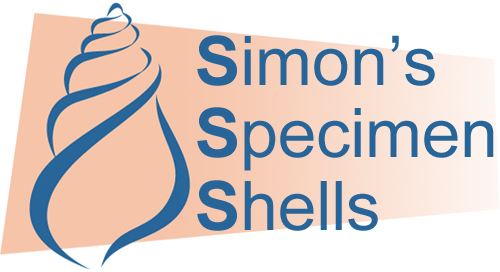FAQs
Photography
A high-quality DSLR photo of one shell (e.g. ventrum and dorsum) takes me roughly 1 hour to produce. For certain species (especially those with thick periostracum) it takes much longer. So, it is not practical to show photographs representing every lot that is for sale.
Currently 40% of those lots that are for sale have a photo, and I constantly try to increase this proportion. All those shells in the catalogue which are not for sale have a photo.
Each photo takes about 1 hour; some take significantly longer (depending on the species). I will try to accommodate your requests, especially concerning a shell where the ID is open to question, a higher-priced shell, or a species that I've never photographed before. But please consider that it is not practical for me to take photos of a whole series of shells without very good reason.
The shell is placed inside a light cube. I use 4 flashguns fired by infra-red which can be positioned differently depending on the lighting requirements of a particular shell. All images are produced by ‘stacking’ a series of through-focus raw images, to overcome the restricted depth-of-field of a macro lens. I am pleased to give more technical details, if you email me.
Nikon® D3200 cameras fired by infra-red remote.
Sigma® 105mm macro lens.
Nikon® SU-800 commander unit and four SB-R200 Speedlights.
No, for two reasons. For photography, each shell is positioned in one of my custom-made ‘cradles’, and it’s impractical to manufacture a cradle that holds more than one shell. And, I use strong side-lighting for each shell; two shells next to each other would throw shadows on one another.
Shells smaller than c.12mm are photographed with a trinocular microscope, custom-built by Brunel Microscopes Ltd. Lighting is from 54 LEDs in 2 arrays. Through-focus images are collected and digitally stacked. Email me if you’d like to learn more about my microphotography.
I use Helicon® for stacking through-focus images, and Adobe® Photoshop® for creating cut-outs of each image and for fine adjustments to the colour balanceetc.
A few of the shells have never been in my stock. Sometimes people and institutions ask me to photograph shells (for publication etc).
Certainly, just ask me by email if you want a higher-resolution version of a particular photo. Generally my photos of individual shells are 1500 pixels in height on this website, but I retain 4500 pixel versions myself. In the gallery of plates, images are limited to 4MB on this website, which in practice translates to about 4000 pixels in height. I have much higher resolution versions of most of the plates, which I can share on request.
You are welcome to share my digital photos on social media and on not-for-profit internet resources, on the understanding that I retain the copyright for each image. Please do not remove “©SimonAiken” from the image. I appreciate a credit, or a link to this website.
Please contact me if you wish to use one of my images in a scientific journal or book. I can supply a higher-resolution version, without the “©Simon Aiken” text. I can change the background colour if desired. Normally I ask a small fee for the use of an image in a commercial publication (e.g. a book) but not for scientific journals.
Still have questions?
Feel free to contact me if you have other questions about photographing shells.
%205%20(website).jpg)
